Hi ! We hope this site helps you! ٩(ˊᗜˋ*)و As an Amazon Associate, we earn from qualifying purchases without additional cost. Click to read more about our Privacy Policy or Affiliate Disclosure
As previously mentioned in [Japanese Grammar Introduction page] , Japanese has a few different way to talk based on the formality.
For beginner, you will first learn [Polite] & [Plain] style.
Difference between [Polite] & [Plain]
[Plain] style / Informal way of talk is for close friends/family, while [Polite] style is for anyone else you meet other than close friends/family. If you’re unsure, always use [Polite] to avoid any misunderstanding (๑•̀ㅂ•́)و✧As you can see, [Polite] is more useful, so we’ll start from it first…
You will learn how to say present & negative , including the past rules of polite way of talking.
Note that in Japanese, it’s very normal to be as subtle as you can. Provided what you talking about is clear enough, a complete sentence can just be a verb with nothing more! So using the pattern below, you can already use it to create a very simple & fully functional sentence.
Let’s start with Noun
Noun is very simple! To describe object names in polite ways, here’s the rules below
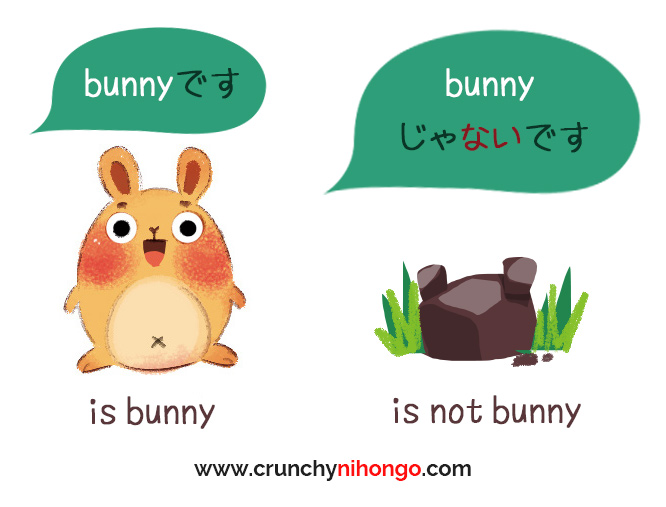
[POSITIVE]
[noun] です
[noun] DESU
[NEGATIVE]
[noun]ではありません / ではないです/ じゃありません/ じゃないです
[noun] DEWA ARIMASEN / DEWA NAI DESU / JA ARIMASEN / JA NAI DESU
Left to Right = More polite to Less polite*

[POSITIVE PAST]
[noun] でした
[noun] DESHITA
[NEGATIVE PAST]
[noun] ではありませんでした / ではなかったです/ じゃありませんでした / じゃなかったです
[noun] DEWA ARIMASEN DESHITA / DEWA NAKATTA DESU / JA ARIMASEN DESHITA / JA NAKATTA DESU
Left to Right = More polite to Less polite*
*Pick anything you like… But the shortest is the recommended for casual everyday usage. In fact, Japanese loves to abbreviate or shortening anything! (except when they are being super polite)
Now move on to ADJECTIVE
Note that there are 2 type of adjective [な-adjective] and [い-adjective]
Related What is [な-adjective] and [い-adjective] ??
[な-adjective]
Useful notes To describe something with [な-adjective] in any way, you use the exact same rules as [noun] because [な-adjective] is basically a [noun] used as adjective in Japanese.

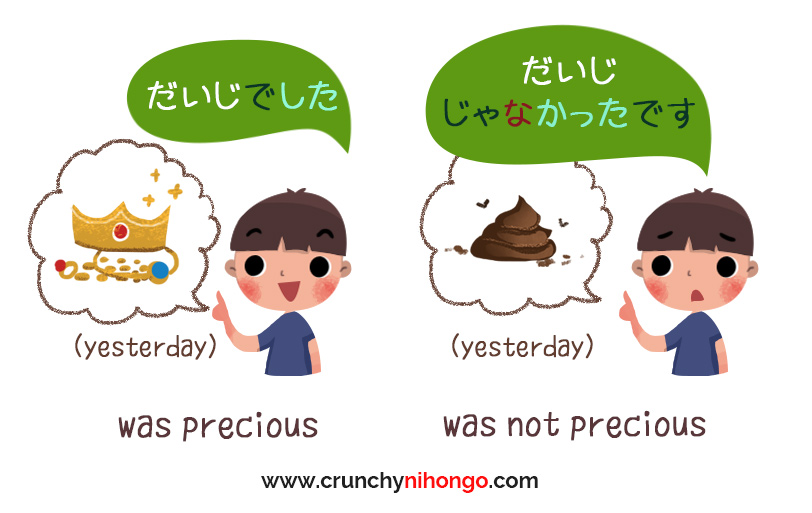
…………………………………………
[い-adjective]

[POSITIVE]
[い-adjective] です
[い-adjective] DESU
[NEGATIVE]
last い kana くありません / くないです
last i sound KU ARIMASEN / KU NAI DESU
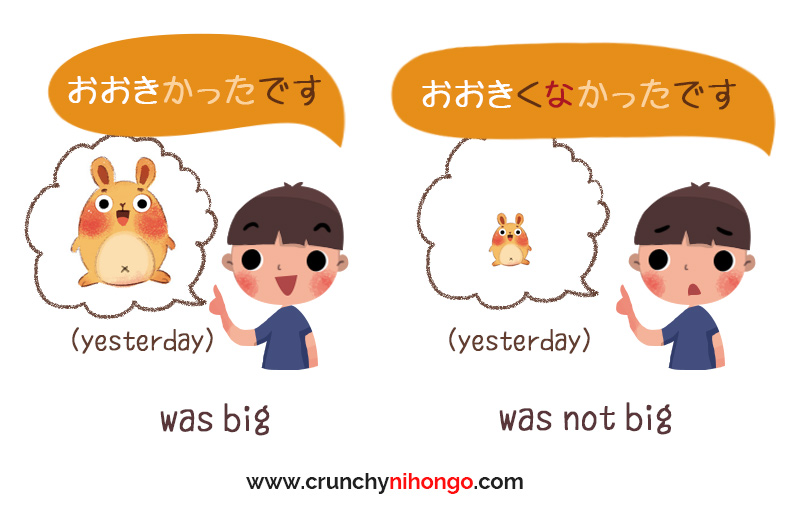
[POSITIVE PAST]
last い kana かったです
last i sound KATTA DESU
[NEGATIVE PAST]
last い kana くありませんでした / くなかったです
last i sound KU ARIMASEN DESHITA / KU NAKATTA DESU
And last is VERB
To describe an action in polite ways, we use verb form MASU「- ます」

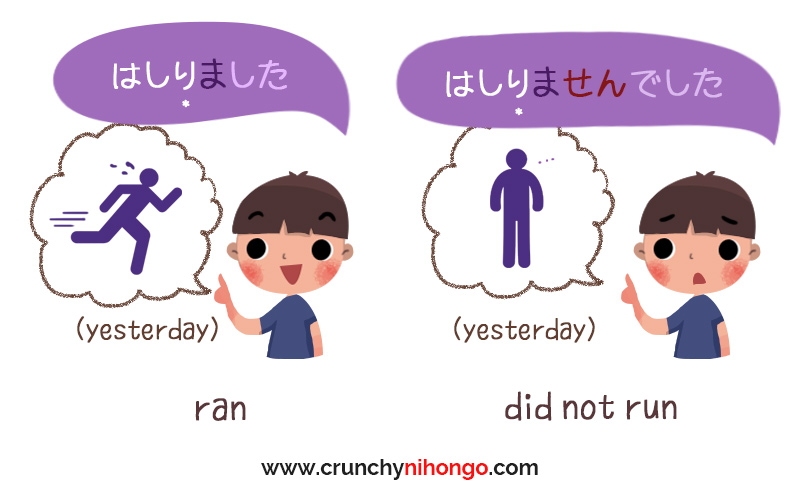
Related What is verb form? What is verb type [V.5] [V.1] [V.IR] ?
HOW TO CONJUGATE VERB FOR POLITE (ます) FORM?
First, the verb needed to be treated according to each type. And then you simply use the formula.
Treatment for [V.5] type
First change last kana from dictionary form into (i) sound before using the formula.
to read: よむ —> よみ (yomu —> yomi)
to swim: およぐ —> およぎ (oyogu ―> oyogi)
…………………………………………
Treatment for [V.1] type,
Remove the last る (RU) kana before using the formula
to eat: たべる —> たべ
to wear: きる —> き
…………………………………………
Treatment for [V.IR] type,
We remove the last る (RU) , and change the first kana to (i) sound before using the formula
to do: する (SURU) —> し
to come: くる (KURU) —> き
ます (MASU) FORMULA (Polite form)
…………………………………………..
[POSITIVE] add ます(MASU)
[POSITIVE PAST] add ました(MASHITA)
[NEGATIVE] add ません (MASEN)
[NEVATIVE PAST] add ません (MASENDESHITA)
SUMMARY!
And now you are able to build a simple sentence! Wohoo ! Congrats!
To sum it up, we have this neat table below.
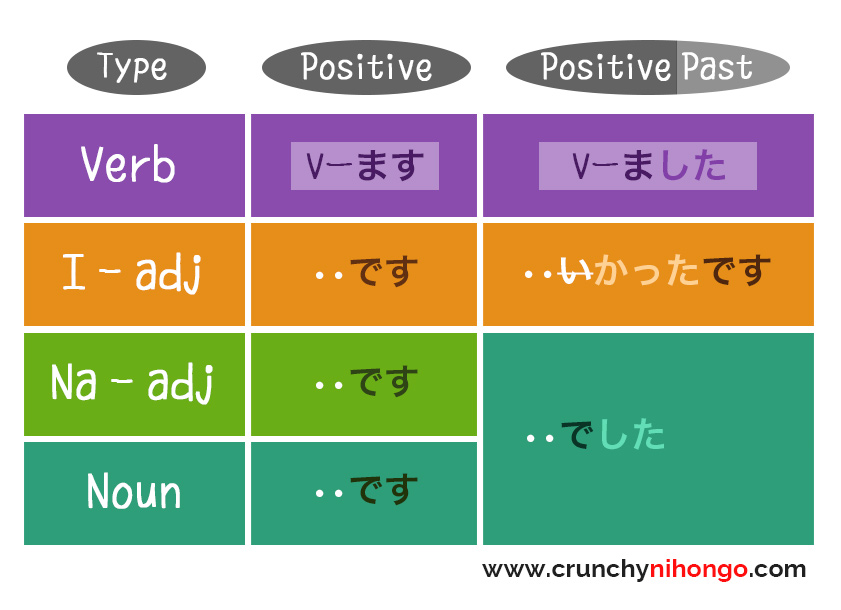
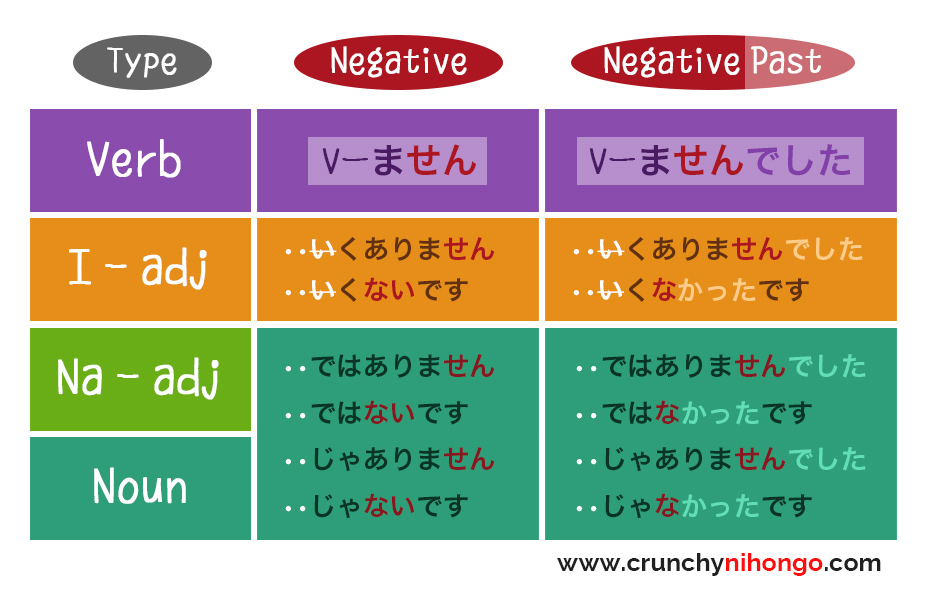
Useful notes Notice the color marking! Japanese conjugation is stackable .
The red shows the negative, while the lighten part is the past part. We hope it helped you to learn the rules better.
Can I use the lessons above in real life?
This is a good questions! And you might not believe it, but the answer is YES you can use it in everyday life!
The English translations seems unusable because it’s being literally translated.
Japanese is quite different than English in the sentence structure. The simplest form of Japanese is very simple. It can just be a verb with nothing else!
A perfect usage for above lessons is to answer simple questions.
Here are some example
VOCABULARY
Cat: ねこ (NEKO)
Japanese people: にほんじん (NIHON JIN)

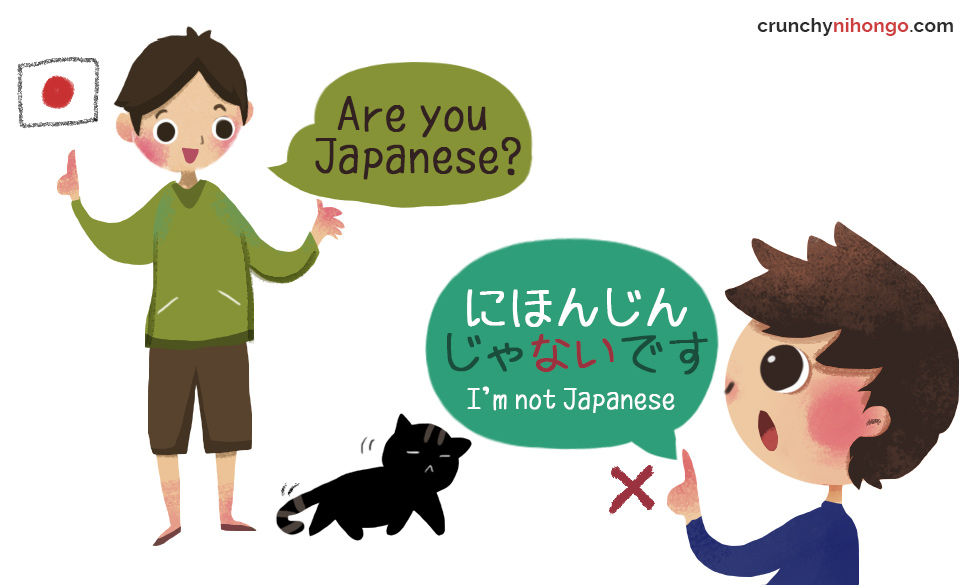
Drop obvious element
Notice that in the reply, you don’t mention “I am”. But it’s translated with “I am”. The literal translation is just “not a Japanese”. But in English you cannot have sentence without subject, therefore to be grammatically correct in English, it require adjustments.
Please keep in mind that when learning Japanese, almost most of the translation is not literal but more contextual.
In Japanese, it’s very natural to drop something that is already obvious, and fully functional sentence doesn’t require any subject either. Just a verb can be counted as a complete functional sentence.
In the reply, it’s obvious enough that the sentence is about you. Therefore you don’t need to mention “I am” again.
Related Japanese Grammar Introduction
Let’s have more example using [な-adjective], [い-adjective], and verb.
VOCABULARY
Beautiful: きれい (KIREI)
Expensive: たかい (TAKAI)
Eat: たべる (TABERU)
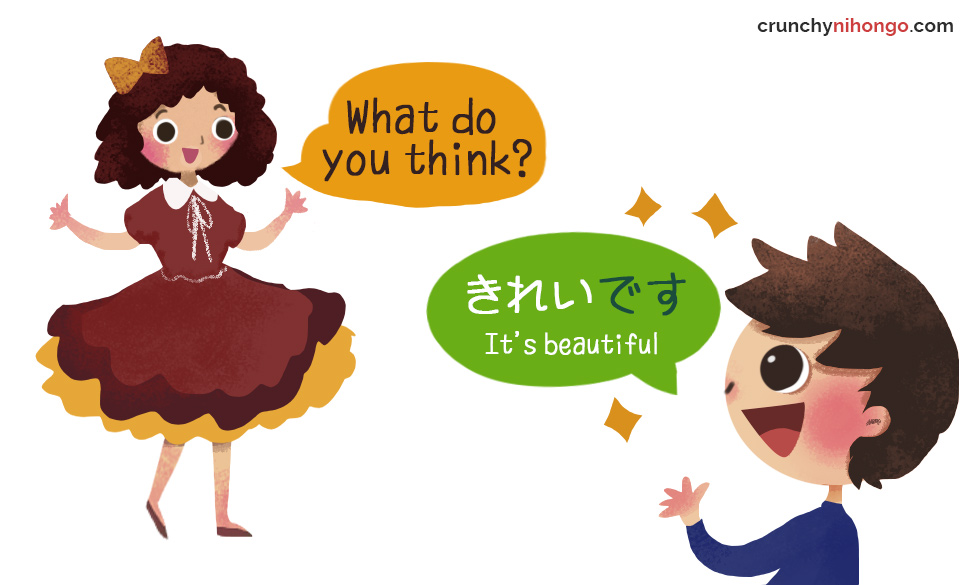
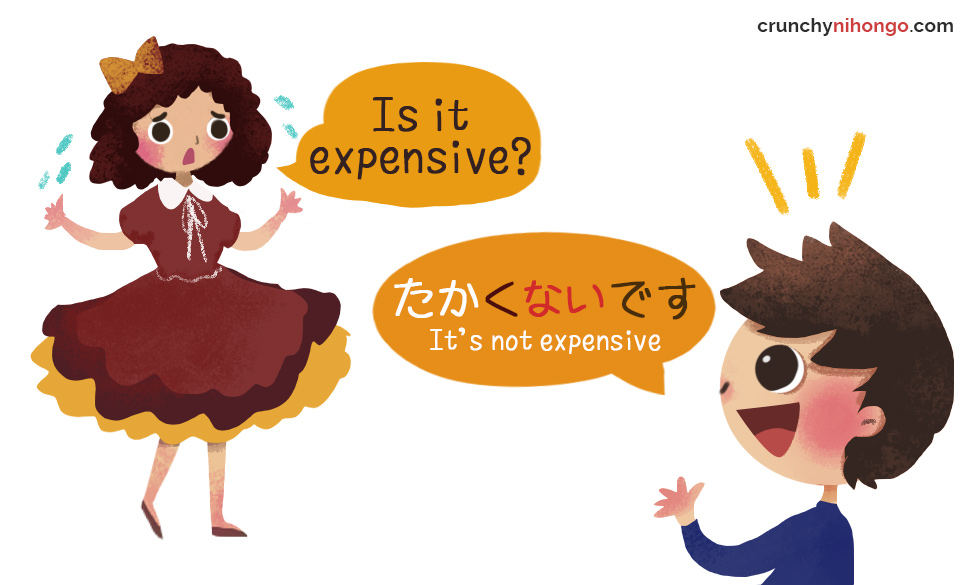

No Future Tense in Japanese
Notice that in the last sample, it’s translated as ‘will’. This is because the questions context is about future and in English you need to add will to be grammatically correct. In Japanese, there is no future tense, to talk about future we simply just add time description in the sentence. In this case, the time description is described in the questions.
Please keep in mind that when learning Japanese, almost most of the translation is not literal but more contextual.
Related Japanese Grammar Introduction
See? You can use it in real life situations! 😀
It’s especially useful for travelling, since even though it’s very basic, it’s functioning perfectly!
…………………………………………
Send us feedback to request lessons or just to say hi!
We’d love to hear what you think~
Happy learning!
°˖✧◝(⁰▿⁰)◜✧˖°

There is an error:
[NEGATIVE PAST]
[noun] ではありません / ではないです/ じゃありません/ じゃないです (JA NAI DESU insteed of JA NAKATTA DESU)
[noun] DEWA ARIMASEN DESHITA / DEWA NAKATTA DESU / JA ARIMASEN DESHITA / JA NAKATTA DESU
Thanks for reporting, the error has been fixed 😉
why did you guys stop updating japanese tales?:(
your website is so cool and it helps to learn language in enjoyable way
We lack in manpower & fund 🙁 Please be patience and keep supporting us so we can back to increase the content more 😀 Thank you~